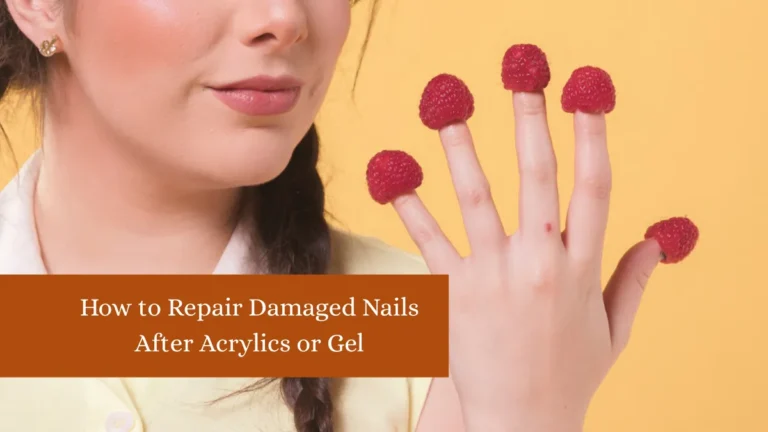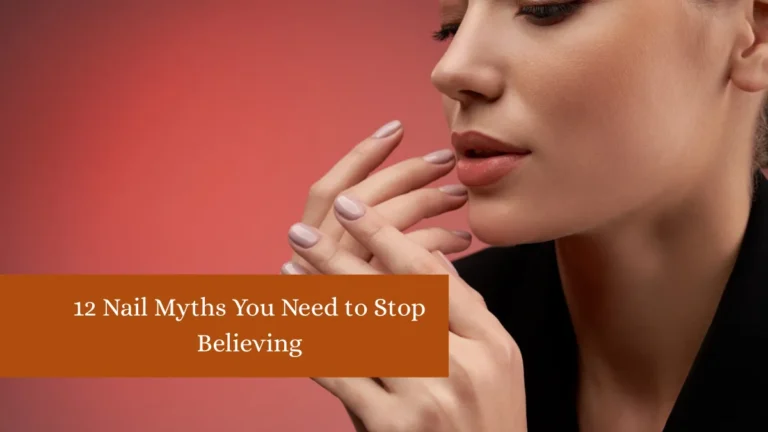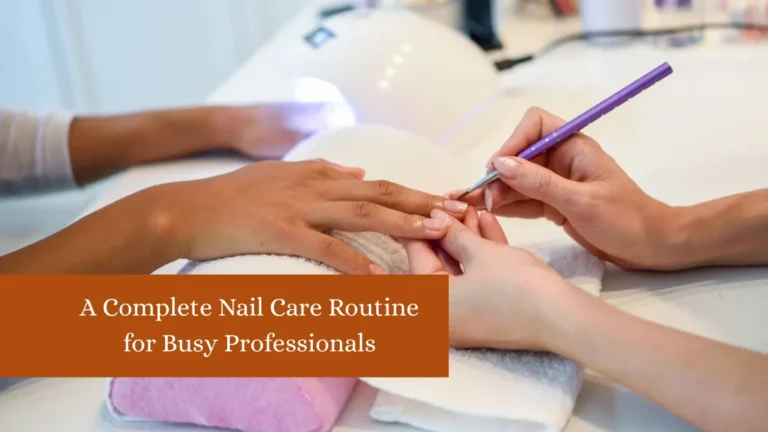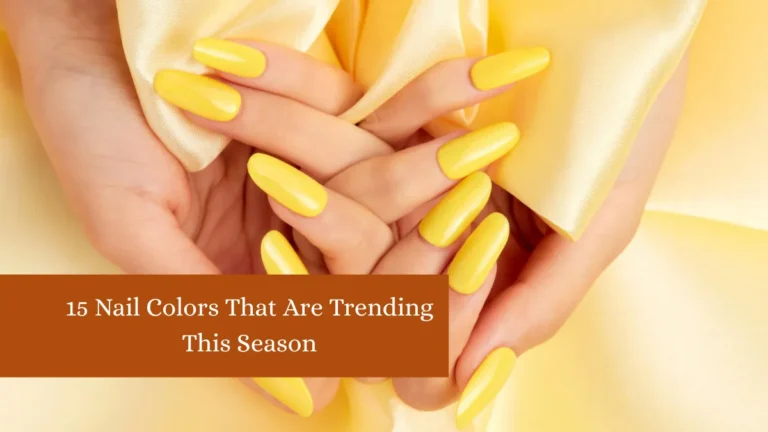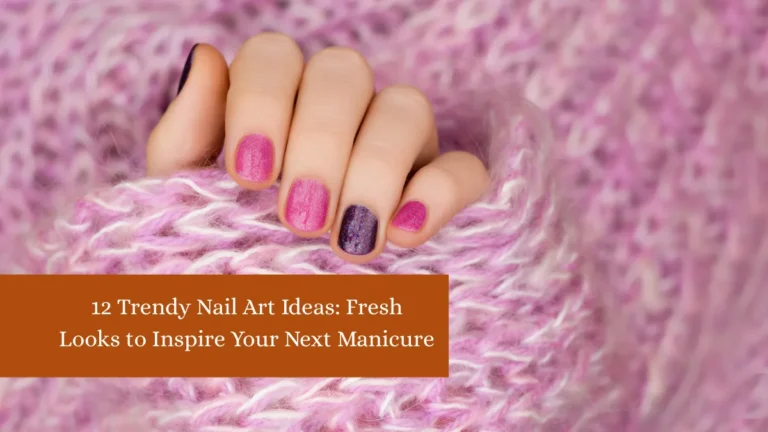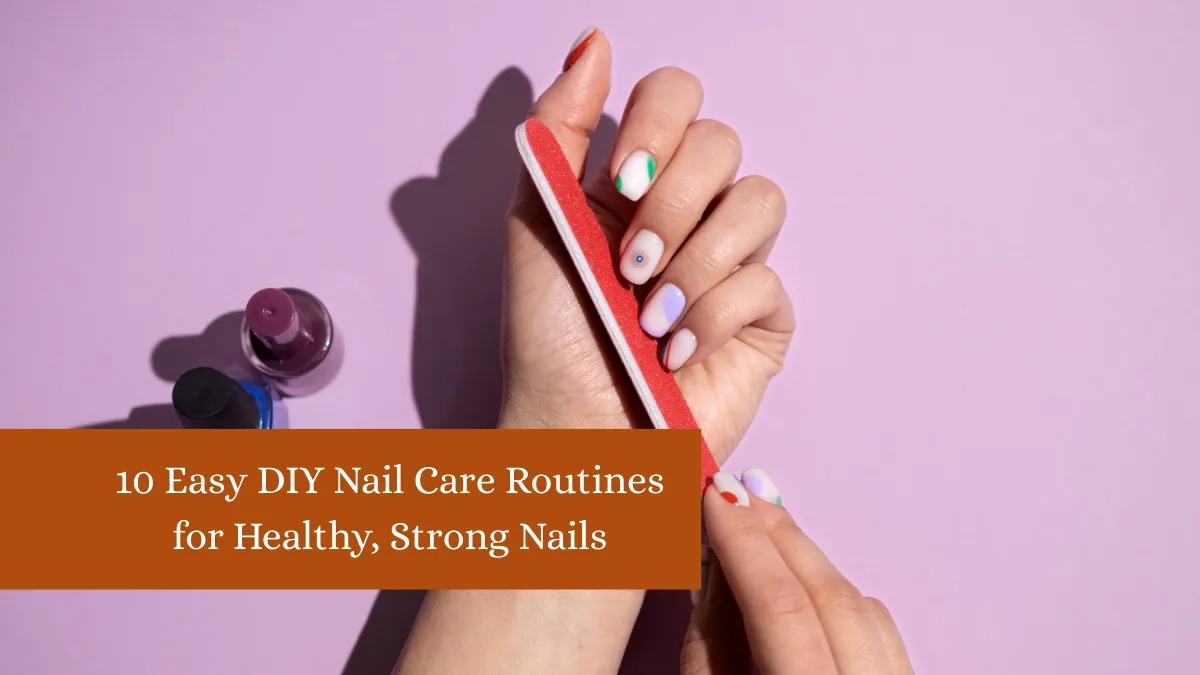Healthy, strong nails are not just a beauty statement—they’re also a sign of good overall wellness. However, daily activities, exposure to chemicals, and neglect can lead to brittle, weak, or discolored nails. The good news is that you don’t have to visit a salon every week to keep your nails in top shape. With consistent, easy-to-follow DIY nail care routines, you can maintain their strength, shine, and resilience right at home.
The key is developing healthy habits and sticking to them over time. From proper cleaning and shaping techniques to natural remedies and hydration tips, each step you take adds up to long-term nail health. In this guide, we’ll explore ten simple yet effective nail care routines that anyone can do without expensive tools or treatments. Whether you want to prevent breakage, encourage growth, or simply keep your nails looking neat and polished, these DIY tips will get you there.
1. Keep Nails Clean and Dry
One of the simplest yet most important steps in maintaining healthy nails is keeping them clean and dry. Excess moisture can weaken nails, making them prone to peeling or fungal infections, while trapped dirt can cause discoloration and promote bacterial growth. Begin your routine by gently washing your hands and nails with a mild soap, ensuring you clean under the nail tips with a soft brush. Avoid harsh cleansers that strip natural oils, as dryness can lead to brittleness.
After washing, dry your hands thoroughly, including the spaces between fingers and the underside of nails. When doing activities that involve prolonged contact with water—such as washing dishes or cleaning—wear protective gloves to prevent water damage. This simple habit also keeps nails from softening and breaking easily. A clean, dry environment discourages fungal infections and supports nail strength, making it the first, non-negotiable step toward strong and healthy nails at home.
2. Trim and File Regularly
Just like hair, nails benefit from regular trimming to maintain their shape and prevent breakage. Overgrown nails are more susceptible to snagging, which can lead to painful splits. Use a sharp nail clipper or scissors designed specifically for nails, trimming straight across to avoid ingrown nails.
Follow up by gently filing the edges with a fine-grit nail file to smooth out any rough spots that can catch on fabric or surfaces. Always file in one direction rather than sawing back and forth, as this prevents unnecessary stress and splitting.
Adjust your trimming frequency based on nail growth speed—usually every one to two weeks works well for most people. Regular trimming also helps maintain uniformity, making your nails look neat and professional without salon visits. This practice not only keeps nails manageable but also reduces the risk of accidental damage, ensuring a healthier foundation for growth and strength.
3. Moisturize Your Nails and Cuticles
Hydration is key to strong, flexible nails that resist breakage. Just like skin, nails and cuticles need moisture to stay healthy. Without it, nails can become dry, brittle, and prone to peeling. A simple DIY routine is to massage cuticle oil into the nail beds daily—natural oils like jojoba, almond, or coconut oil work exceptionally well.
This not only nourishes the nails but also improves blood circulation in the nail bed, promoting healthier growth. After applying oil, seal in the moisture with a rich hand cream, especially after handwashing or exposure to cold weather. Avoid picking at or cutting cuticles, as they act as a protective barrier against infections.
Instead, gently push them back after a warm soak to keep them tidy without damage. Making moisturizing a daily habit keeps nails flexible, prevents painful hangnails, and enhances the overall look and feel of your hands naturally.
4. Use a Gentle Nail Polish Remover
If you love painting your nails, choosing the right nail polish remover is essential to avoid long-term damage. Many commercial removers contain acetone, which can strip natural oils, leaving nails dry and weak. Instead, opt for an acetone-free formula that’s gentler while still effectively removing polish.
These removers often contain added moisturizers like glycerin or aloe vera to help counteract dryness. When removing polish, use a soft cotton pad and avoid excessive rubbing, which can weaken the nail surface. If your polish is stubborn, press the pad against the nail for a few seconds to allow the remover to dissolve it before wiping away.
Limit the frequency of polish changes to give your nails time to “breathe” between applications. By using a gentle remover and mindful removal techniques, you can enjoy colorful manicures without compromising nail health or strength over time.
5. Give Your Nails a Break from Polish
While polished nails look glamorous, constant wear can weaken nails over time. Many people notice yellowing or brittleness from prolonged use of polish, especially darker shades. To keep nails strong, it’s essential to let them rest periodically. A good rule is to go polish-free for at least a few days every month, allowing nails to recover and rehydrate naturally.
During these breaks, focus on nourishing treatments like applying cuticle oil, moisturizing creams, or nail-strengthening serums. You can also buff your nails lightly to restore shine without polish. This rest period also gives you a chance to inspect nails for any signs of damage, discoloration, or infection that may need attention.
By incorporating polish-free intervals into your routine, you ensure that your nails remain healthy, resilient, and naturally beautiful—ready to handle your next manicure without weakening over time.
6. Eat a Nail-Healthy Diet
Nail health starts from the inside out, and your diet plays a huge role in how strong and fast your nails grow. Nails are primarily made of keratin, a protein that requires specific nutrients for optimal production. Ensure your diet includes adequate protein sources like eggs, lean meats, beans, and nuts.
Biotin, a B-vitamin found in foods like almonds, sweet potatoes, and spinach, is especially beneficial for promoting thicker, stronger nails. Omega-3 fatty acids from fish or flaxseeds help maintain nail flexibility, while zinc and iron support healthy growth and prevent brittleness.
Hydration is equally important—drink enough water daily to keep nails and cuticles moisturized from within. If your nails are consistently weak despite a healthy diet, consider a multivitamin or nail-specific supplement after consulting a healthcare professional. A nutrient-rich diet lays the foundation for strong, healthy nails that thrive naturally without excessive external treatments.
7. Avoid Using Nails as Tools
Many people unconsciously use their nails to open cans, scrape off stickers, or pry objects—but this habit is one of the fastest ways to weaken and break nails. Nails are not designed to handle that kind of pressure, and repeated misuse can lead to cracks, chips, and painful splits. Instead, keep actual tools like small scissors, tweezers, or letter openers nearby to handle such tasks.
This simple adjustment protects your nails from unnecessary trauma and preserves their shape and strength. Being mindful of how you use your nails also helps prevent polish chipping and keeps manicures looking fresh longer. Think of your nails as delicate extensions of your hands rather than multi-purpose tools. By breaking this habit, you greatly reduce the risk of sudden nail damage and ensure that all your other nail care efforts are not undone by a single careless action.
8. Protect Nails from Harsh Chemicals
Daily exposure to harsh chemicals in cleaning products, dishwashing detergents, or even beauty treatments can weaken nails and irritate the surrounding skin. Whenever possible, wear gloves during cleaning or gardening to create a protective barrier. If gloves aren’t available, rinse hands thoroughly after chemical contact and follow with a nourishing hand cream.
Even beauty products like strong nail adhesives or excessive gel treatments can cause thinning if overused. If you work with chemicals regularly, choose fragrance-free, hypoallergenic gloves to minimize skin irritation. For added protection, apply a strengthening base coat even when not wearing colored polish—it acts as a shield against environmental damage.
Protecting your nails from chemical exposure ensures they stay strong, hydrated, and less prone to peeling or breakage over time. Consistency in this habit goes a long way in preserving natural nail health in the long run.
9. Try DIY Nail Strengthening Treatments
Homemade nail treatments can be surprisingly effective in strengthening weak or brittle nails. A popular DIY method is soaking nails in a mixture of warm olive oil and lemon juice for 10–15 minutes, which nourishes while naturally brightening. Coconut oil massages are another excellent option for deep hydration. You can also create a strengthening mask using honey and egg yolk to boost protein and moisture levels in the nail bed.
These treatments are inexpensive, chemical-free, and easy to incorporate into your weekly routine. For best results, follow up with a rich hand cream to lock in moisture. Unlike store-bought treatments that may contain harsh additives, DIY remedies focus on natural, nutrient-rich ingredients that promote long-term nail health without side effects. Making these a regular part of your nail care routine provides both immediate nourishment and gradual strengthening over time.
10. Maintain Consistency in Nail Care
The most important aspect of any nail care routine is consistency. Doing a nourishing soak or trimming your nails once in a while is helpful, but real results come from regular maintenance. Create a simple schedule that includes weekly trimming, daily moisturizing, and monthly rest periods from polish. Keep your nail care tools clean and organized so you’re always ready for a quick touch-up.
Consistency also means being mindful of your habits every day—avoiding nail biting, protecting them from damage, and eating a balanced diet. Over time, these small actions add up, resulting in nails that are stronger, healthier, and more beautiful. A consistent routine doesn’t have to be time-consuming; even five minutes a day of intentional care can transform the condition of your nails and keep them looking their best year-round.
Bottom Line
Healthy, strong nails are the result of consistent care, good nutrition, and protective habits. With these ten easy DIY routines, you can maintain nail strength and beauty without salon visits. By combining proper cleaning, trimming, moisturizing, and mindful protection, your nails will not only look great but also resist damage and breakage. Small daily efforts lead to long-term results, making nail care an enjoyable and rewarding habit.
FAQs
1. How often should I moisturize my nails?
Daily, especially after washing hands.
2. Can diet really improve nail strength?
Yes, a nutrient-rich diet supports healthy growth.
3. Is acetone remover bad for nails?
Frequent use can dry and weaken nails—opt for acetone-free formulas.
4. How long should I give my nails a polish break?
At least a few days every month.
5. Are natural remedies effective for nail care?
Yes, many DIY treatments strengthen and hydrate nails effectively.
✨ You May Also Like ✨
